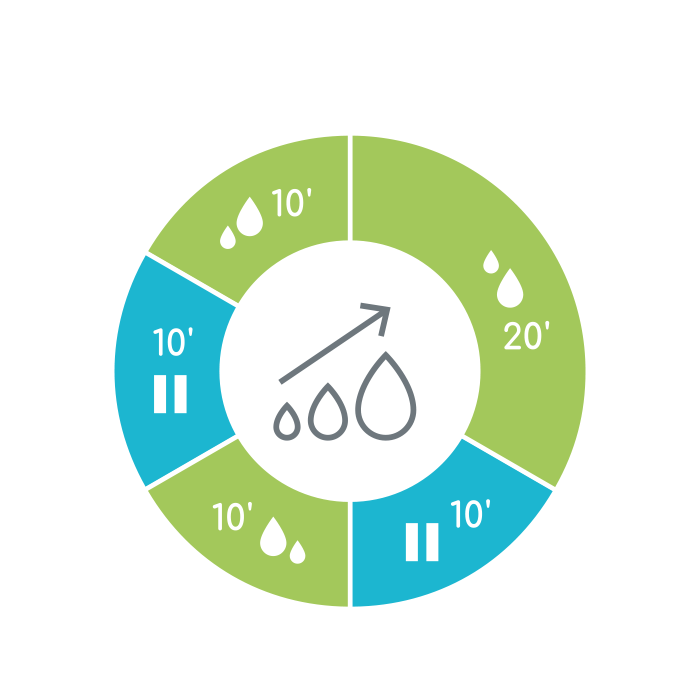Not enough milk? What you can do to help.
New mothers are often worried about whether they can make enough breast milk. If the baby is healthy and growing well, everything is probably okay. Your breasts produce milk based on supply and demand and if you breastfeed your baby on demand, you will naturally make the right amount of milk.
Your baby sometimes may not be satisfied because it is having a growth spurt. This is often the case between day 8 and 10, at 5–6 weeks and between 3 and 4 months of age. The baby then demands the breast more often, which naturally ramps up milk production. This phenomenon is called cluster feeding.
If your baby is satisfied after breastfeeding, their stool is soft and yellowish, they have a wet nappy about 6 times a day (in the first 4 to 6 weeks, at least 3 nappies have stool) and they seem happy and satisfied, it is not necessary to give supplementary infant food (which would also mean that your volume of breast milk would decrease because there is less demand).
Tips for how you can increase your milk volume:
- Put your baby to the breast more often: after 24 hours of putting your baby to the breast more often, your milk production has usually adjusted to the increased demand.
- Change sides often: Let your baby drink from both sides at every meal. To empty both breasts as much as possible, change between sides several times during a feed (ping pong breastfeeding).
- Long periods of skin contact: Stimulates the release of the hormones prolactin and oxytocin, which encourages the formation of milk.
- Look after yourself: Make sure you are eating a balanced and adequate diet, drinking plenty and getting lots of rest.
- Express after breastfeeding: to completely empty the breasts, which then produce more milk.
- Breast massages before and during expressing
- Frequent expressing over an hour (Power Pumping)
Power Pumping
Power Pumping imitates cluster feeding behaviour using a breast pump to increase your milk production. This method can help you in the following situations:
- If your baby is having a growth spurt
- If you are separated from your baby and your baby and your milk volume is reduced because of the stress
- A decline in the volume of breast milk in premenstrual women
- If your baby is premature and you still cannot breastfeed, the baby is too weak to suckle and is separated from you. This method helps you to maintain your milk production.
If you normally breastfeed and would like to quickly ramp up your milk production, you can also use Power Pumping.
Power Pumping with the breast pump – how does it work?
Ardo Alyssa is the world’s first breast pump with an automatic power pumping programme. The programme is a predefined one-hour interval pumping programme made up of:
20 minutes pumping, 10 minutes pause, 10 minutes pumping, 10 minutes pause, 10 minutes pumping

The short breaks between the expressing sessions and each new stimulation increases the prolactin level (the hormone responsible for producing milk) and this encourages milk production.
While the duration of the pumping and pausing phases is predefined for the Alyssa pump, the vacuum and cycle settings can be adjusted to suit your personal needs at any time.
If you are unsure whether you should use a Power Pumping session once or several times a day, it is best to contact your midwife or lactation consultant. They will best advise you about which rhythm is most suitable for your situation.
Some mothers are able to very quickly increase their milk volume with the help of Power Pumping but for others it can take up to two weeks before they notice a change. What is important is that you find the right way for yourself and don’t drive yourself crazy.

